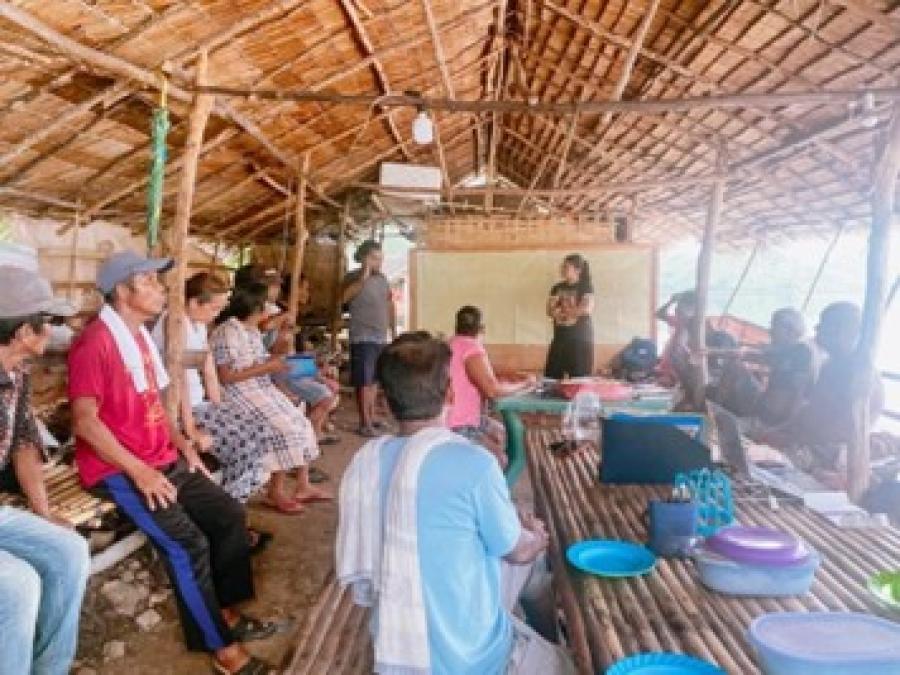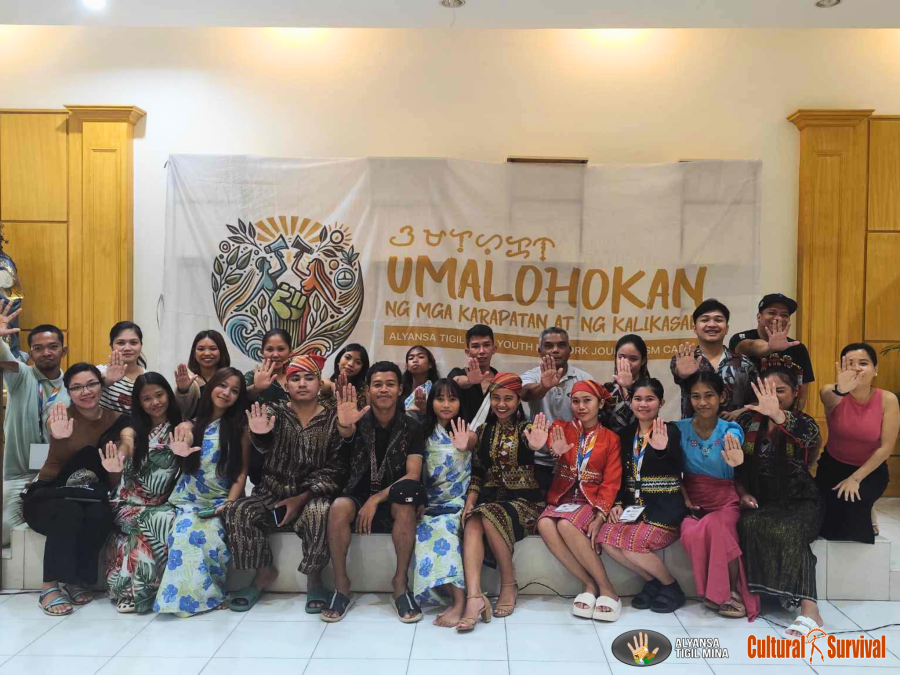Problems in the 1980s
Agta women face a number of difficulties as they enter the last years of the twentieth century. Like men in this former hunting-gathering society, they must adjust to an onslaught of social, economic, and environmental changes now transforming northeastern Luzon from remote virgin tropical forest to a multiethnic industrial and agricultural corner of a nation-state. As women, they are experiencing special difficulties: their quality of life, social status, and health are deteriorating; the death of their children is an ever-present threat; and their very subsistence is undercut by forces beyond their society's control. Agta are diversifying their foraging base and exploiting new opportunities, but they are becoming a powerless and scorned cultural minority, without access to power or law. They find themselves a deprived people, exploited by all.
Agta differ in their subsistence, settlement, and social systems throughout the provinces of Cagayan, Isabela, and Quirino. In some places, they are semi-settled and trade meat, fish, and labor for plant foods; in other areas, they are mobile hunter-gatherers, and in others, fishermen or landless agricultural laborers.
Agta share a common language, culture, and ecological adaptation based on exploitation of tropical forest and fresh water, and a long history of interaction with an agricultural peasantry. Variations occur as local opportunities differ, particularly as interaction between Agta and lowlander agriculturalists intensifies.
The Agta consider themselves first and foremost hunters and fishers. Settlement clusters of dry season shades and wet season pole houses are placed near flowing fresh water, either along the coast or upriver, but usually near exploitable plant and animal resources. From extended family groups, Agta men, women, and children hunt, fish, cultivate crops, or collect food daily. Wild pig and deer are the usual hunted quarry, although seasonality affects game choice and availability. Success rates vary but kills are made on at least one-third of the hunts. Fishing is largely a dry season activity, and is most intense when rivers are lowest, warmest, and clearest. Spearfishing prevails, with the use of lines and nets being restricted to less favorable conditions. Collection of honey is frequent during the early dry season, while gathering of plant foods and shellfish is primarily a rainy season activity. Most Agta undertake swidden horticulture sporadically; some families help lowland farmers clear, plant, and harvest in return for payment in kind or cash.
Agta women participate in a full range of daily subsistence and maintenance activities. They hunt, using dogs, knives, and bow and arrows; they kill a significant portion of the wild pig and deer. During 185 days of observation (55 trips) at Nanadukan, Cagayan, for example, teams of female hunters killed 22.2 percent of the prey with a 30.4 percent success rate. Mixed teams of men and women accounted for another 35.0 percent of all meat, with a 41 percent success rate. Women, both youth and adult, also fish. Women are especially noted for their skills in spearfishing, working in rough, deep waters as well as in shallow streams. Both men and women gather food, although the former favor honey collection, seldom joining women in securing mollusks from rivers or the ocean. Women tend to dominate the procurement of plant foods, except fruits. In recent years, however, Agta have neglected forest plant foods, preferring instead domesticated cereal grains and roots.
Women are very active in obtaining rice, corn, sweet potato, cassava, and other cultivated food. Both men and women clear the family swidden and burn, plant, and harvest. Only during the harvest do women do most of the work. When, however, Agta work for lowland farmers, women generally dominate all tasks except clearing. The changing emphases in Agta subsistence are forcing ever greater commitment of women's labor to agriculture. Women are also active in the acquisition of plant food through their role as transporters and traders of meat, fish, and other goods. They carry out economic transactions, dealing face to face with trade partners. Men, often worried about histories of conflict and violence with lowland agriculturalists, preferred to see women do the trading.
Once remote, the Sierra Madre is now experiencing rapid change. Since the 1960s, farmers, loggers, mining prospectors, and many petty traders have migrated to the area. Farmers and loggers lead the way. Ilokanos from the Cagayan Valley and the coast are numerous, but others are perhaps more forceful. Ifugaos from the Central Cordillera are establishing pioneer hamlets along the western side of the mountains in Isabela and Nueva Vizcaya provinces. Itneg and Tingguian from Abra and Apayao are expanding down coastal Cagayan, moving into drainages once occupied only by Agta. The logging industry is now penetrating the remotest areas, bringing diverse peoples into contact with Agta. Immigrants hitch rides on logging trucks reaching virgin lands with ease.
In addition, soldiers, insurgents, missionaries, and anthropologists now reach formerly isolated Agta territory and have an assorted impact on them. A cash economy now dominates much of economic life, and consumerism is rampant. Goods transported into Agta country include liquor, sweets, radio-phonographs, clothing, cigarettes, etc. Once incredible and unobtainable luxuries, these are now available even if not readily attainable.
As the social environment has changed, the natural environment has been degraded. Immigrant farmers burn logged forest areas. Efforts to reforest, when they exist, are usually thwarted by subsequent burning. Given both the social and environmental changes, the resource base of the Agta is disappearing.
Many of the agents of this deterioration are viewed by Agta in a positive light. While environmentalists, anthropologists, and missionaries may decry the effects of loggers, farmers, and others, Agta weigh their advantages and disadvantages, often favoring the newcomers. Loggers especially can be generous exchange partners. They have access to rice, canned goods, coffee, sugar, cash, and gin. They buy all the meat, fish, and even root crops they can procure. They tend to be more affluent than the near-subsistence level farmers, and hence can pay more. Farmers are also valuable, however, since their long-term commitment to a locale means a lengthy exchange relationship, making the "borrowing" of food possible in emergencies.
Soldiers and insurgents, while approached with far more caution, also become sources of goods. The former are especially dangerous, but do have access to an abundance of consumables. Insurgents, the guerrillas who at various times and places oppose government armed forces, have much less to offer, but are often viewed positively since they give the Agta respect and courteous treatment.
The health of Agta women is deteriorating as a result of liquor, stressful personal interactions, loss of social status, lowered self-image, and diminishing faith in Agta culture.
Gestation, childbirth, and childrearing are difficult for Agta, and are becoming more so. While work loads have increased for Agta women residing close to farming communities, pregnancy problems appear to be increasing as a result of inadequate protein in the diet, less variation in forest procured plant foods, and generally poorer health. Childbirth is no more or less difficult, but lack of access to trained midwives and to physicians results in occasional deaths during delivery. The greatest incidence of child mortality occurs in the first year after birth. Babies are especially subject to exposure-related illnesses and to digestive tract problems. Pneumonia and dysentery are frequent, and childhood deaths common. Approximately one-third of the children die before reaching puberty.
Women consider their health as well as that of the children to be deteriorating as a result of increased diseases and malnutrition. Immigrants increase the frequency of diseases. Tuberculosis is especially significant, debilitating and killing even young mothers. With population increases in the area, streams and rivers have become polluted by chemicals, human wastes, and erosion. Agta drink flowing water, never boiling it. In remote areas, fewer problems result, but close to permanent settlements, depletion of fresh water fish and shellfish, dependence on rice, corn, and roots, and frequent selection of liquor over food in economic exchanges result in nutritional and disease problems. As non-Agta populations grow, the forests and rivers are further depleted of food, and as Agta self-sufficiency decreases, women and men face ever greater difficulty in making an adequate living.
Among several Agta groups, liquor is the cause of insufficient food, of conflict, and degradation. Lowlanders find liquor a cheap and easy means of procuring meat and fish from Agta. Agta men, women, and children quickly become drunk. They are then relieved of their trade goods. Men find themselves cheated and scorned, while the women may be sexually abused by lowlander males. At the very least, Agta women are constantly - with or without liquor present - sexually harassed, propositioned, and inundated with lewd jokes. Agta can, at times, return the jokes with great ease but are eventually worn down. Women never feel safe from molestation unless Agta men are present.
The problem results from a lack of respect, of exploitation and social subordination. Agta in general and women in particular are viewed by many of the surrounding groups as easy marks - to be cheated as efficiently as possible, as barely human, inferior beings, and as of no real worth. They are on the bottom of the complex Philippine social hierarchy. They have no access to power and are at the mercy of dubious patrons. And, while Agta themselves consider men and women of equal worth and status, most non-Agta divide the male-female world very differently. Newcomers today seldom deal with women, but consider men the appropriate negotiators and decision makers. The men are wined and dined, cheated and beaten as circumstance dictates. Women are removed from decision making; they find their influence eroding as more interaction with non-Agta is necessary and as Agta men are bent by non-Agta opinions and values.
Throughout much of this century Agta women lived stable lives as hunters, fishers, and gatherers, with sporadic cultivation of crops and trading allowing an adequate, although hardly affluent life style. Today their social and natural environment is changing. Too many immigrants have gained food and land at Agta's expense, too few rights, and no access to the nation's legal machinery are creating a disadvantaged, deprived, and disheartened ethnic group. Women, once capable providers, guiding their own lives with confidence, are now more and more trying to keep their families alive.
Agta women, of course, share a great deal with many of the neighboring non-Agta women. Farmers' and loggers' wives and many of the women of the various ethnic and occupational groups share the basic hardships of gaining a living, of health and nutrition, and of nurturing babies. Few women of the Sierra Madre could claim to enjoy a quality of life that would be satisfactory. While Agta women are indeed at the bottom of the barrel, most other women are only a little higher. Certainly as long as life becomes even more difficult, Agta women will find their lot deteriorating. Life is not easy in these mountains, not in the 1980s.
Article copyright Cultural Survival, Inc.



